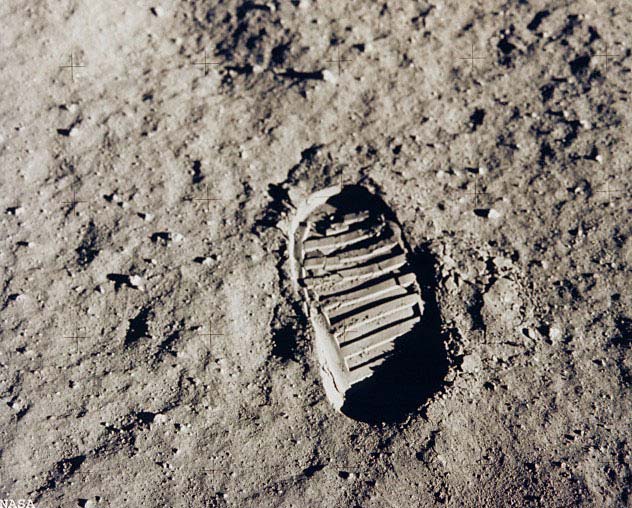Nanoparticles May Explain Moon Dirt's Odd Behavior

The famously strange behavior of lunar soil may be caused by nanoparticles embedded in the dirt, a new study reports.
The study found that nanoparticles — specks of matter whose tiny size imparts exotic and often bizarre properties — are common in samples of moon dirt brought back to Earth by Apollo astronauts.
The discovery may explain why moon soil is such a poor conductor of heat, why it hovers above the lunar surface far longer than gravity should allow, and why it's so sticky and abrasive — characteristics observed, and sometimes deplored, by moonwalking astronauts four decades ago.
Inside the glass beads
The researchers studied lunar soil samples using synchrotron-based nano tomography. This technique creates 3D images of nanoparticles by blasting them with X-rays. [Photos: NASA's Apollo Moon Missions]
The team was particularly interested in looking at tiny glass beads scattered throughout the moon dirt, which scientists believe were created by the intense heat of micrometeorite impacts on the lunar surface.
"We were really surprised at what we found," study leader Marek Zbik, of the Queensland University of Technology in Brisbane, Australia, said in a statement. "Instead of gas or vapor inside the bubbles, which we would expect to find in such bubbles on Earth, the lunar glass bubbles were filled with a highly porous network of alien-looking glassy particles that span the bubbles' interior."
Get the Space.com Newsletter
Breaking space news, the latest updates on rocket launches, skywatching events and more!
These nanoparticles don't always stay entombed inside the beads, however.
"They are released when the glass bubbles are pulverized by the consequent bombardment of meteorites on the moon's surface," Zbik said. "This continuous pulverizing of rocks on the lunar surface and constant mixing develop a type of soil which is unknown on Earth."
The moon has no appreciable atmosphere, so micrometeorite impacts are common. Earth's thick air, on the other hand, prevents most space rocks and dust from hitting our planet's surface.

Strange moon dirt
Nanoparticles are roughly 1,000 times smaller than the diameter of a human hair. They're so minute that some of their behavior is governed by the laws of quantum physics rather than the "normal" physical laws that we observe operating around us every day, Zbik said.
"We don't understand a lot about quantum physics yet,but it could be that these nanoparticles, when liberated from their glass bubble, mix with the other soil constituents and give lunar soil its unusual properties," he said.
These properties include extreme chemical reactivity, a high electrostatic charge that causes it to hover above the lunar surface and low thermal conductivity.
Because of their exotic characteristics, nanomaterials are prized in a variety of fields, from medicine to computers. So the new study could have practical applications here on Earth, researchers said.
"Our work now is to understand how those particles evolve from this process," Zbik said. "It may also lead us to completely different way of manufacturing nanomaterials."
The team's study was published recently in the journal ISRN Astronomy and Astrophysics.
Follow SPACE.com on Twitter@Spacedotcom. We're also on Facebook and Google+.
Join our Space Forums to keep talking space on the latest missions, night sky and more! And if you have a news tip, correction or comment, let us know at: community@space.com.

Space.com is the premier source of space exploration, innovation and astronomy news, chronicling (and celebrating) humanity's ongoing expansion across the final frontier. Originally founded in 1999, Space.com is, and always has been, the passion of writers and editors who are space fans and also trained journalists. Our current news team consists of Editor-in-Chief Tariq Malik; Editor Hanneke Weitering, Senior Space Writer Mike Wall; Senior Writer Meghan Bartels; Senior Writer Chelsea Gohd, Senior Writer Tereza Pultarova and Staff Writer Alexander Cox, focusing on e-commerce. Senior Producer Steve Spaleta oversees our space videos, with Diana Whitcroft as our Social Media Editor.









